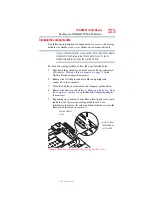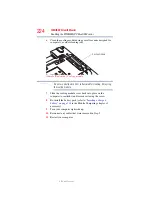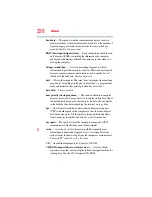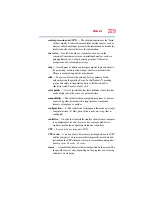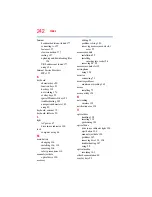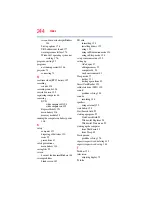
Glossary
237
RJ11
— A modular connector used on most U.S. telephone systems and
direct-connect modems. The RJ11 connector is a 6-wire connector.
ROM (read-only memory)
— Non-volatile memory that can be read
but not written to.
Non-volatile
here means that information in ROM
remains whether or not the computer is receiving power. This type
of memory is used to store your computer’s BIOS, which is
essential instructions the computer reads when you start it up.
See
also
BIOS, memory.
Compare
RAM.
S
select
— To highlight or otherwise specify text, data, or graphics with the
intent to perform some operation on it.
serial
— Processes that occur one at a time. In communications, it means
the transmission of one bit at a time sequentially over a single
channel. On your computer, the serial port provides a serial interface
between the computer and an appropriate device. Compare
parallel.
shortcut
— See
keyboard shortcut
.
Sleep
— A feature of some Windows
®
operating systems that allows you
to turn off the computer without exiting your open applications and
to continue from where you left off when you turn the computer on
again.
software
— See
program.
Compare
hardware.
solid state drive
—A data storage device that utilizes solid-state memory
as opposed to a hard disk (see
hard disk
). Much like hard disks, solid
state drives hold much more information than diskettes and are used
for storage of programs and data
.
Suspend
— A feature of some Windows
®
operating systems that allows
you to turn off the computer without exiting your open applications
and to continue from where you left off when you turn the computer
on again.
system disk
— A diskette that contains the operating system files needed
to start the computer. Any diskette can be formatted as a system
disk. A system disk is also called a “bootable disk” or a “startup
disk.” Compare
non-system disk.
system prompt
— The symbol (in the MS-DOS
®
operating system,
generally a drive letter followed by a “greater than” sign) indicating
where users are to enter commands.

